Logitic Transportation and Logistics Theme 1.1.8
- Updated
- Secure Payment
- Secure Payment
Logitic Transportation and Logistics Theme: Launch your logistics website with ready-made demos and a clean design.
When we needed a transportation and logistics website that looked professional from day one, we turned to the Logitic Transportation and Logistics Theme. It’s a modern and responsive theme designed for freight, courier, and delivery service companies. In our experience, the clean design of the Logitic Transportation and Logistics Theme helps visitors quickly understand what you do, what routes you cover, and how to request a quote.
Plus, their demos shorten the process: we import, adjust colors, fonts, and modules with Elementor, and publish without touching any code. If you want to save time and go to market with a solid image, the Logitic Transportation and Logistics Theme takes you from zero to a live site in hours, not weeks.
Why choose Logitic Transportation and Logistics Theme for transportation and logistics?
The Logitic Transportation and Logistics Theme is built around what your customer needs to see first: clear services, coverage, freight types, delivery times, and visible contact paths. We like it because it reduces friction for both marketing and operations; the content team updates services and FAQs without technical dependencies, and sales receives leads with context.
In our practice, the Logitic Transportation and Logistics Theme quickly resolved the hierarchy: a hero with a direct message, modules for “what we transport,” benefits (insurance, tracking, 24/7 support), and a CTA for a quote. The result is a flow that leads to contact in just a few steps. The adaptability is real: with minimal changes, we reused the same base for an urban courier and a freight forwarding company. And since the theme doesn’t require advanced programming, daily maintenance becomes simple and predictable.
Demos that speed up launch: import, adjust, and publish
The Logitic Transportation and Logistics Theme demos are our competitive advantage. We started with a demo for ground freight and another for international logistics, imported them with a click, and within minutes, we had navigation, sections, and styles ready. This allowed us to validate the visual proposal with stakeholders and move directly to the content.
Our typical workflow with the Logitic Transportation and Logistics Theme is: import the demo, replace images with your own fleet and warehouses, adjust the palette to your brand, load services, and open the quote form. The demo’s clean design maintains a pleasing visual flow on desktop and mobile, avoiding the visual clutter that can be distracting in generic themes. The result: short implementation time and a flawless first brand impression.
Code-free customization with Elementor (headers, colors, sections)
The Logitic Transportation and Logistics Theme works great with Elementor. We reordered blocks, duplicated sections, and adjusted headers/footers without touching CSS. For campaign landing pages (e.g., peak season), we cloned the homepage, changed the hero to one with a specific route/port, and featured a quote form above the fold.
In our experience, the theme’s styles panel and Elementor widgets are sufficient for customizing buttons, service icons, and route listings. Best of all, the Logitic Transportation and Logistics Theme maintains consistency across pages: fonts, spacing, and grids respond well, giving the site an agency-like feel without the investment in custom layout.
Internal pages that add value: services, projects, team and testimonials
Beyond the home page, the Logitic Transportation and Logistics Theme stands out for its array of internal pages. We rely on service templates (land, sea, air, and customs transportation), case studies/projects with metrics (routes, times, savings), and team pages that humanize the brand. We add testimonials and certifications (ISO, insurance, partners) to reinforce trust.
Using the Logitic Transportation and Logistics Theme, we built a “Resources” section (blog/news) for SEO and authority: route updates, packaging tips, import checklists, etc. This depth means the site not only sells, but also explains, reducing repeated support questions.
Key features for the industry: maps, forms, booking, and WooCommerce
In logistics, functionality is king. With the Logitic Transportation and Logistics Theme, we set up quote forms with fields for origin/destination, freight type, dimensions, and urgency; we integrated maps for coverage and pickup points; and we configured scheduling/booking modules if the business requires reservations. In some projects, we activated WooCommerce to sell packaging, materials, or “closed” services (e.g., urban shipping by zone). The theme’s clarity makes these modules work seamlessly: navigation remains clean, the CTA is always visible, and the user knows what to do on each screen. The result: more qualified inquiries and less abandonment.
Multilingualism and expansion: WPML and best practices for internationalization
For companies operating in multiple countries, the Logitic Transportation and Logistics Theme works well with multilingual workflows. We organize menus by language, adjust date/currency formats, and review sensitive microcopy (Incoterms, insurance, time). Our approach with the Logitic Transportation and Logistics Theme is to maintain clean URLs, correct hreflang, and well-linked mirror content so Google understands the relationship between versions. This allows the site to scale to new markets without redesigning the site.
Performance and SEO: clean, responsive structure and constant updates
Speed matters, especially on mobile. With the Logitic Transportation and Logistics Theme, we optimized images, enabled lazy loading, and controlled slider weights. The clear heading structure and minimal design help keep LCP and CLS levels in the green. Additionally, maintaining a blog with industry news and how-to guides boosts long-tail keywords (e.g., “door-to-door shipping Buenos Aires – Santiago”). Our technical SEO check with the Logitic Transportation and Logistics Theme includes: titles/descriptions per template, breadcrumbs, basic structured data, and a clean sitemap. The result: a solid foundation for positioning services and capturing organic leads.
Use cases: courier, cargo, and delivery (how we adapted it)
We use the Logitic Transportation and Logistics Theme in three typical scenarios. For urban couriers, we emphasize regional coverage, delivery times, and a short form. For international freight, we emphasize ocean/air routes, partners, and customs processes, with a detailed quote form. For B2B delivery, we prioritize scheduling pickups and fleet availability. The same constant applies to all scenarios: the Logitic Transportation and Logistics Theme adapts with minimal changes, the clean design reduces uncertainty, and demos accelerate production. It’s the difference between “having a website” and “having a website designed for logistics.”
Quick Implementation Checklist with Logitic Transportation and Logistics Theme
-
Import a demo aligned with your main service.
-
Adjust branding (logos, colors, fonts).
-
Configure navigation with services, routes, and quotes.
-
Create forms with upload fields and destinations.
-
Add visible maps and touchpoints.
-
Publish internal pages (services, projects, team, FAQs).
-
Optimize images and enable lazy loading.
-
Review technical SEO (titles, breadcrumbs, sitemap).
-
Mobile testing: menu, forms, and CTAs.
-
Launch and measure: leads by service and conversion rate.
Conclusion
If you’re looking for a site that communicates professionalism and converts visitors into inquiries, the Logitic Transportation and Logistics Theme is a sure bet. Ready-made demos, code-free customization, and a clean design that puts the focus on what matters: services, coverage, and contact. We chose the Logitic Transportation and Logistics Theme because it reduces implementation times, facilitates teamwork, and offers a solid foundation for growth. For transportation, freight, courier, or delivery companies, the Logitic Transportation and Logistics Theme is the most reliable shortcut to a digital presence that sells.
$29.00 Original price was: $29.00.$4.99Current price is: $4.99.
- Lifetime Updates And Support
- Unlimited Website Usage
- This item is licensed 100% GPL
- Money-back Guarantee
Get in Subscription – Unlimited Downloads for $14.99/mo
- 5000+ Items
- Unlimited Usage
- Support
Frequently asked question
How many sites can I use the products on?
You can use any product from our store on any website you want.
Will I get updates?
Of course. If you buy an individual product, you’ll get lifetime updates for that purchase.
On the other hand, if you purchase a membership, you will receive updates until your membership expires.
Are the products authentic?
Yes, each product is original. The difference with the author is that we distribute under the GNU GPL v2/3 regulations/license, so we don’t provide additional services from the author, such as customizations, etc. We also don’t provide license keys, and in the case of products that require one to work, we pre-activate them so they don’t require anything and you can use them seamlessly on any website you want.
Do you provide technical support?
Yes, and regarding time, it is usually on average within 24 to 48 business hours.
Now, there are times when, in less than a day, we have already provided an answer and a solution, depending on the case.
Are there download limits?
No. We don’t believe in that format, so you can download as many times as you want. No problem. We pay for high-quality professional storage just to avoid any issues.
Do you provide license keys?
No. It’s not feasible, since we’ve already experienced keys flying everywhere, and we could lose the corresponding accounts.
That said, while all products are original, in the case of products that require a license key to operate, we will take care of pre-activating them.
Refund if product unusable?
We’re here to make sure you’re 100% satisfied with your experience. Our Customer Support Team will do everything possible to ensure you’re comfortable with placing an order and happy with the products you download. But we also know sometimes things happen.
Due to the nature of digital media means that once you have downloaded a plugin or theme there’s really no way to ‘return’ it. No refunds will be given except in the case when the digital product is completely unusable.
If the digital product is unusable, we need time to try to fix it. Otherwise, we will make a refund.
Our support team is available 24/7, if you have any question or need help in installing or configuring digital products purchased on the website, please don’t hesitate to CONTACT US.
Please note that we are not developers of the provided products, so our technical support capabilities are limited.
We do not change product functionality and do not fix developer bugs.
In case you are accepted to get refund, payment refunds are processed within 5-7 business days. All refunds are issued to the original payments. It may take up to 5 days for your refund to be reflected in your PayPal account or bank statement. If you paid using a credit or debit card, the money will be refunded to your card. Depending on your card issuer, it can take up to 30 days for the refund to appear on your card statement.
IMPORTANT! Please CONTACT US first so we can handle your issues. If you arbitrarily open a dispute without contacting us first, your account may be suspended immediately without notice.
Logitic Transportation and Logistics Theme: Launch your logistics website with ready-made demos and a clean design.
When we needed a transportation and logistics website that looked professional from day one, we turned to the Logitic Transportation and Logistics Theme. It’s a modern and responsive theme designed for freight, courier, and delivery service companies. In our experience, the clean design of the Logitic Transportation and Logistics Theme helps visitors quickly understand what you do, what routes you cover, and how to request a quote.
Plus, their demos shorten the process: we import, adjust colors, fonts, and modules with Elementor, and publish without touching any code. If you want to save time and go to market with a solid image, the Logitic Transportation and Logistics Theme takes you from zero to a live site in hours, not weeks.
Why choose Logitic Transportation and Logistics Theme for transportation and logistics?
The Logitic Transportation and Logistics Theme is built around what your customer needs to see first: clear services, coverage, freight types, delivery times, and visible contact paths. We like it because it reduces friction for both marketing and operations; the content team updates services and FAQs without technical dependencies, and sales receives leads with context.
In our practice, the Logitic Transportation and Logistics Theme quickly resolved the hierarchy: a hero with a direct message, modules for “what we transport,” benefits (insurance, tracking, 24/7 support), and a CTA for a quote. The result is a flow that leads to contact in just a few steps. The adaptability is real: with minimal changes, we reused the same base for an urban courier and a freight forwarding company. And since the theme doesn’t require advanced programming, daily maintenance becomes simple and predictable.
Demos that speed up launch: import, adjust, and publish
The Logitic Transportation and Logistics Theme demos are our competitive advantage. We started with a demo for ground freight and another for international logistics, imported them with a click, and within minutes, we had navigation, sections, and styles ready. This allowed us to validate the visual proposal with stakeholders and move directly to the content.
Our typical workflow with the Logitic Transportation and Logistics Theme is: import the demo, replace images with your own fleet and warehouses, adjust the palette to your brand, load services, and open the quote form. The demo’s clean design maintains a pleasing visual flow on desktop and mobile, avoiding the visual clutter that can be distracting in generic themes. The result: short implementation time and a flawless first brand impression.
Code-free customization with Elementor (headers, colors, sections)
The Logitic Transportation and Logistics Theme works great with Elementor. We reordered blocks, duplicated sections, and adjusted headers/footers without touching CSS. For campaign landing pages (e.g., peak season), we cloned the homepage, changed the hero to one with a specific route/port, and featured a quote form above the fold.
In our experience, the theme’s styles panel and Elementor widgets are sufficient for customizing buttons, service icons, and route listings. Best of all, the Logitic Transportation and Logistics Theme maintains consistency across pages: fonts, spacing, and grids respond well, giving the site an agency-like feel without the investment in custom layout.
Internal pages that add value: services, projects, team and testimonials
Beyond the home page, the Logitic Transportation and Logistics Theme stands out for its array of internal pages. We rely on service templates (land, sea, air, and customs transportation), case studies/projects with metrics (routes, times, savings), and team pages that humanize the brand. We add testimonials and certifications (ISO, insurance, partners) to reinforce trust.
Using the Logitic Transportation and Logistics Theme, we built a “Resources” section (blog/news) for SEO and authority: route updates, packaging tips, import checklists, etc. This depth means the site not only sells, but also explains, reducing repeated support questions.
Key features for the industry: maps, forms, booking, and WooCommerce
In logistics, functionality is king. With the Logitic Transportation and Logistics Theme, we set up quote forms with fields for origin/destination, freight type, dimensions, and urgency; we integrated maps for coverage and pickup points; and we configured scheduling/booking modules if the business requires reservations. In some projects, we activated WooCommerce to sell packaging, materials, or “closed” services (e.g., urban shipping by zone). The theme’s clarity makes these modules work seamlessly: navigation remains clean, the CTA is always visible, and the user knows what to do on each screen. The result: more qualified inquiries and less abandonment.
Multilingualism and expansion: WPML and best practices for internationalization
For companies operating in multiple countries, the Logitic Transportation and Logistics Theme works well with multilingual workflows. We organize menus by language, adjust date/currency formats, and review sensitive microcopy (Incoterms, insurance, time). Our approach with the Logitic Transportation and Logistics Theme is to maintain clean URLs, correct hreflang, and well-linked mirror content so Google understands the relationship between versions. This allows the site to scale to new markets without redesigning the site.
Performance and SEO: clean, responsive structure and constant updates
Speed matters, especially on mobile. With the Logitic Transportation and Logistics Theme, we optimized images, enabled lazy loading, and controlled slider weights. The clear heading structure and minimal design help keep LCP and CLS levels in the green. Additionally, maintaining a blog with industry news and how-to guides boosts long-tail keywords (e.g., “door-to-door shipping Buenos Aires – Santiago”). Our technical SEO check with the Logitic Transportation and Logistics Theme includes: titles/descriptions per template, breadcrumbs, basic structured data, and a clean sitemap. The result: a solid foundation for positioning services and capturing organic leads.
Use cases: courier, cargo, and delivery (how we adapted it)
We use the Logitic Transportation and Logistics Theme in three typical scenarios. For urban couriers, we emphasize regional coverage, delivery times, and a short form. For international freight, we emphasize ocean/air routes, partners, and customs processes, with a detailed quote form. For B2B delivery, we prioritize scheduling pickups and fleet availability. The same constant applies to all scenarios: the Logitic Transportation and Logistics Theme adapts with minimal changes, the clean design reduces uncertainty, and demos accelerate production. It’s the difference between “having a website” and “having a website designed for logistics.”
Quick Implementation Checklist with Logitic Transportation and Logistics Theme
-
Import a demo aligned with your main service.
-
Adjust branding (logos, colors, fonts).
-
Configure navigation with services, routes, and quotes.
-
Create forms with upload fields and destinations.
-
Add visible maps and touchpoints.
-
Publish internal pages (services, projects, team, FAQs).
-
Optimize images and enable lazy loading.
-
Review technical SEO (titles, breadcrumbs, sitemap).
-
Mobile testing: menu, forms, and CTAs.
-
Launch and measure: leads by service and conversion rate.
Conclusion
If you’re looking for a site that communicates professionalism and converts visitors into inquiries, the Logitic Transportation and Logistics Theme is a sure bet. Ready-made demos, code-free customization, and a clean design that puts the focus on what matters: services, coverage, and contact. We chose the Logitic Transportation and Logistics Theme because it reduces implementation times, facilitates teamwork, and offers a solid foundation for growth. For transportation, freight, courier, or delivery companies, the Logitic Transportation and Logistics Theme is the most reliable shortcut to a digital presence that sells.
You must be logged in to post a review.
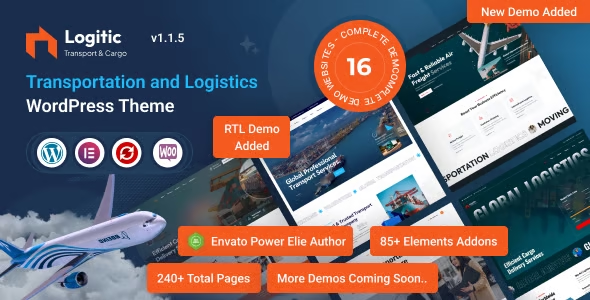


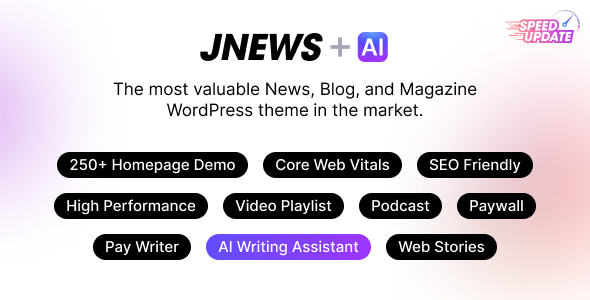
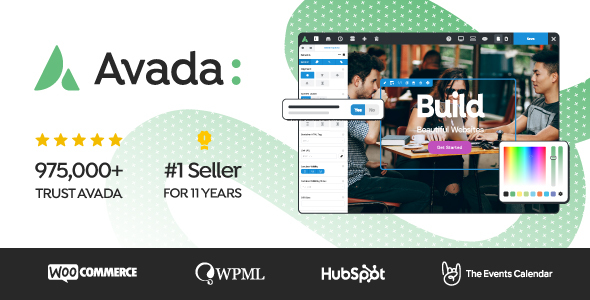


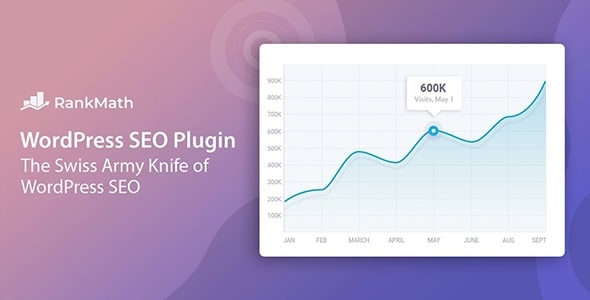

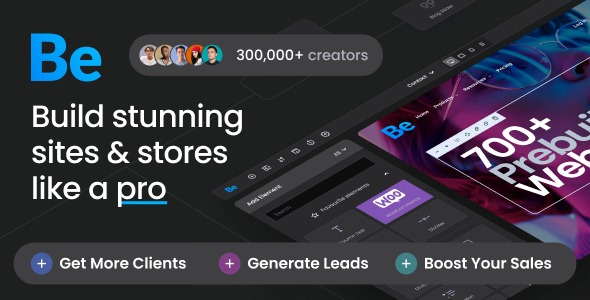

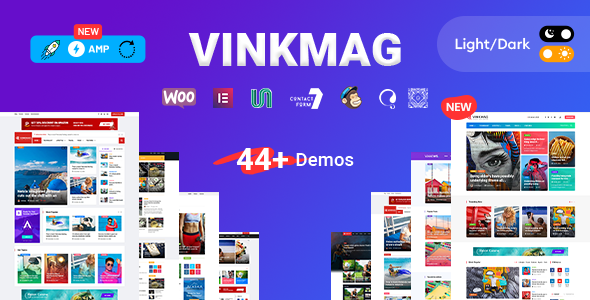






Reviews
There are no reviews yet.